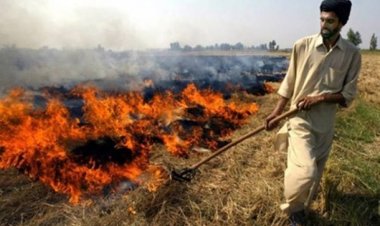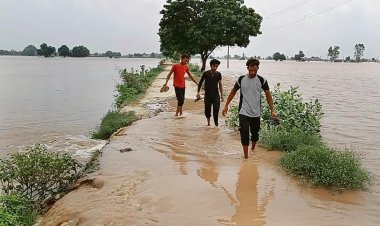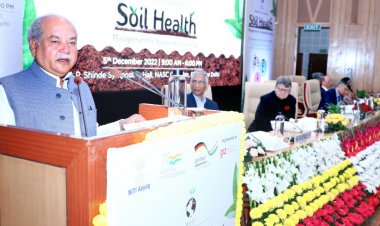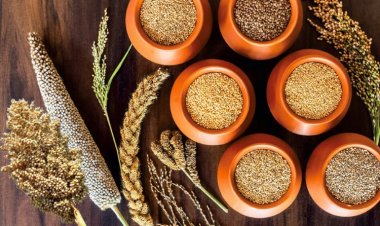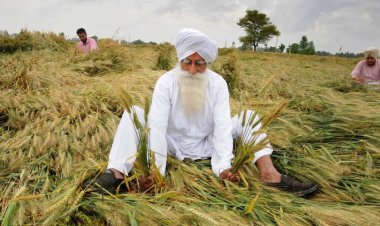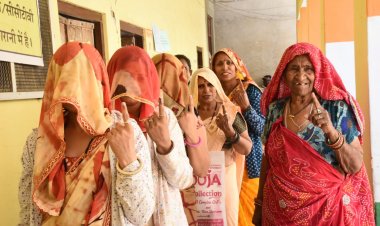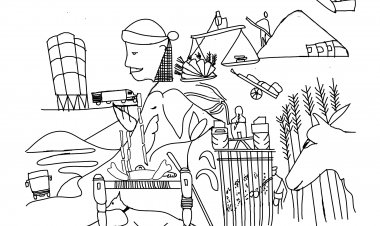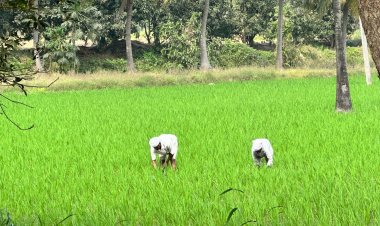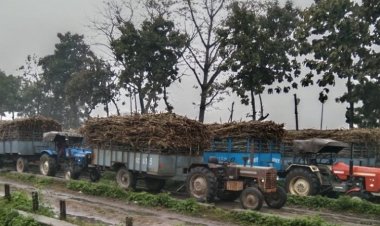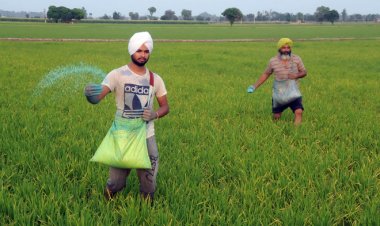Paddy acreage declines by 23.8 per cent in UP and 17 per cent across the country; after wheat, trouble likely on rice front
According to the Indian Meteorological Department (IMD), while there has been 58.58 per cent less rainfall than normal in Western UP till 15 July 2022, the deficit in Eastern UP is 68.30 per cent compared to normal. The paddy acreage in UP is 26.98 lakh hectares up to July 15. This was 35.29 lakh hectares in the same period last year. Which implies that there is a shortfall of 23.8 per cent this year.

Contrary to the forecast of normal rainfall in the current monsoon season, the situation is not normal in the rice-producing region of the country. There is an adverse situation in Uttar Pradesh (UP), the state that is the top producer of rice. Besides, the paddy acreage in Bihar, West Bengal, Chhattisgarh and Telangana, too, lags far behind that last year.
According to the Indian Meteorological Department (IMD), while there has been 58.58 per cent less rainfall than normal in Western UP till 15 July 2022, the deficit in Eastern UP is 68.30 per cent compared to normal. This rainfall is from 1st June to 15th July. Monsoon season starts from first June. The paddy acreage in UP is 26.98 lakh hectares up to July 15. This was 35.29 lakh hectares in the same period last year. Which implies that there is a shortfall of 23.8 per cent this year. If we speak of paddy acreage across the country up to July 15, it lags behind that last year by 17.38 per cent. As per government figures, while it was 155.53 lakh hectares last year up to July 15, it has reached only 128.501 lakh hectares up to July 15 in the current Kharif season.
According to the IMD, while the Long Period Average (LPA) rainfall, which is known as normal rainfall, is 187.1 millimetres (mm) for Western UP up to July 15, there has been only 77.5mm of rainfall in this region this year. That is, the rainfall deficit is 58.88 per cent in Western UP. The situation is worse in Eastern UP. It has received only 77.2mm of rainfall up to July 15 while the LPA for this region up to the said date is 243.5mm. That is, the rainfall has been 68.30 per cent less than normal here. This has led to paddy acreage going down by 23.8 per cent in UP. Western UP has better irrigation facilities than Eastern UP. The latter has fewer tube wells powered by electricity. Neither do the farmers there have the financial strength to save their paddy crop, which needs to be irrigated about 20 times, with the help of diesel.
As far as Bihar is concerned, it has received a rainfall of 194.80mm up to July 15, which is 41.95 per cent less than the normal rainfall of 335.6mm. The paddy acreage in the state has reached only 6.06 lakh hectares up to July 15 compared to 8.77 lakh hectares last year. In West Bengal, too, the paddy acreage has reached only 3.94 lakh hectares due to less rainfall while it was 4.68 lakh hectares in the same period last year. The rainfall has been 45.36 per cent below normal in the state. While West Bengal witnesses a normal rainfall level of 405mm up to July 15, it has received only 221.3mm rainfall up to this date this year.
Among other states, Telangana has a paddy acreage of 1.046 lakh hectares so far this year in comparison to 3.25 lakh hectares last year. In Chhattisgarh, too, the area under paddy is much less. The paddy acreage has reached 16.38 lakh hectares in the state up to July 15 while it was 19.69 lakh hectares up to the same date last year. In Punjab, the paddy acreage is marginally lower than that last year up to July 15 — down from 29.47 lakh hectares to 27.8 lakh hectares.
The sowing of paddy in nurseries takes place in UP in early June and the period from the last week of June to July 15 is the most significant for paddy transplanting. Thus, this 45-day period is very crucial. Given this scenario, if the rainfall does not improve in the days to come in the large area that grows paddy, rice production may get adversely affected. If rice production goes down after the decline in wheat production, the government may have to get serious about foodgrain procurement and availability.
As far as the overall foodgrain stocks in the central pool are concerned, the situation is pretty good at present. Especially in the case of rice stocks, it is highly satisfactory. The rice stocks are 3.5 times the buffer norms for July 1. On this date, the rice stocks in the central pool stood at 472.18 lakh tonnes (lt) this year, which is marginally lower than 491.10 lt last year. The buffer norms mandate rice stocks of 135.4 lt on this date. But when it comes to wheat, the situation is not so comfortable. On July 1, the wheat stocks in the central pool stood at 285.10 lt, pretty close to the buffer norms of 275.80 lt. On July 1 last year, the wheat stocks in the central pool had been 603.56 lt. On 1 July 2022, the combined stocks of wheat and rice stood at 757.28 lt while a year ago, the central pool had stocked 1,094.66 lt of these foodgrains.
The rainfall has been good in the southern, central and western parts of the country. But the situation continues to be difficult in the paddy-growing regions of UP and Bihar. If rainfall does not improve in the days to come, rice production will be adversely affected. Paddy saplings should ideally be transplanted from the nursery within a month, but a period of about 45 days has passed now. The delay in transplanting the saplings is bound to have an adverse impact on the productivity of the crop. So, the next few days are crucial for the farmers and the government both. The crisis of foodgrain availability continues at the global level and India has taken advantage of this. India now has a market share of 40 per cent in rice exports. However, if the production declines on the domestic front, it is bound to affect exports, too.











